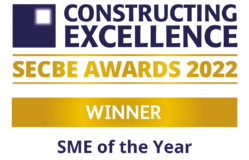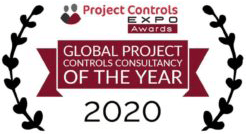It’s an absolute fact that every project ever completed or embarked on has an exact cost that can be calculated to one penny with 100% accuracy. Problem is that many projects don’t discover this until after a project is complete. Meaning that inaccurate estimates lead to financers being called upon to supply additional funds, completion dates being pushed back, or both, as they generally go hand in hand. In catastrophic situations financers may not be able to provide additional funds causing projects to be cancelled and any money already spent metaphorically evaporates. Hindsight is 20/20 in these situations meaning that as the project manager goes over the numbers, pays the invoices and closes out the project, the exact figure is only then determined. The ultimate question is how to be pro-active in order to find the exact value of a project, before succumbing to the seemingly unavoidable additional cost and time delays.
Where To Start
I believe the best place to start is asking ourselves why we continue to embark on projects that continuously go over time and budget. This is an on-going issue that causes public and private stakeholders to lose trust in project delivery. Many projects have been shelved as a result because financers or stakeholders fear that projects will not be able to be delivered on-time and on-budget. Stakeholders want benefits to materialize in time to meet their original need and financers only have finite amounts of money. As an example, if a community is looking to build an underground subway to improve the local transportation network, if it’s delivered 30 years too late or ends up costing ten times the initial price it quickly becomes a negative / pointless investment. In the time it has taken to build this fictitious project flying cars probably have been invented, all together eliminating the need for an underground subway. Alternatively, the community might have been better off investing in alternative forms of transportation to meet their needs, such as better buses. In a catastrophic version of this scenario, the community could end up with a tunnel half built and train tracks leading to no-where because additional funding wasn’t available.
Who Is To Blame?
Is it us as project professionals that are to blame for these delays and cost escalations? Are we not producing correct estimates? Are we failing to manage projects properly? Unfortunately, the answer isn’t that simple and is the culmination of many factors. As the industry evolves so too does our need to adapt project management and technological advancements, to ensure safe and successful project delivery. Adapting and evolving by using the latest technologies and best practices ensures that we are always working to the best of our abilities and to present standards. That being said it’s not entirely the fault of project professionals, when us as a society continue to embark on these projects that are destined for failure.
The Scope Definition Phase
One major oversight is the scope definition phase of a project. It’s regularly overlooked and / or neglected. We are all aware of the cost influence curve, that shows utilizing a measure twice build once ideology should save us time and money. So why do we regularly neglect or sometimes all together pass over the scope definition phase of a project and rush into construction. I believe the main issue is that the scope definition phase produces little of tangible value. Contractors are ready to build but balk at having to sit at a desk and produce documents. Documents stack up, meetings continuously take place but there isn’t a single grain of sand moved on the construction site. As a result, the contractor’s impatience builds, stakeholders become frustrated as costs continue to grow while the construction site remains unchanged. In addition, we must remember that projects aren’t the sole responsibility of project professionals. Politicians, directors, board members, investors, stakeholders – a never ending list, are involved and required to sign-off on and during a project. A politician may make a promise to deliver a new subway, for a price with a specific opening date, without any concept or knowledge of the actual scope of the project. In a densely populated area underground utilities might be strewn everywhere or challenging geological formations may increase project complexity.
Finally, there is the burning question of how much do we spend on scope definition. We all know that the more detail we include in an estimate the more resources it will take to produce. If we estimate to the exact number of nuts and washers, we may get a very accurate price, but it will take years to produce an estimate to this level of detail. At which point a changing environment means that figures estimated at the beginning of this exercise are no longer relevant.
This provides many problems with no simple solution. First, we need to address that project professionals must understand that projects do not occur in isolation. Stakeholders come from a variety of backgrounds, meaning that many will not have completed construction management 101, where the importance of scope definition is clearly identified. There is a need to raise awareness of the importance of this phase of a project and then elaborate on what is actually taking place inside of construction offices. Doing this will enable us to work towards an environment where stakeholders don’t see the beginning of projects as a black box where money goes in and nothing comes out. Second, we need to ensure that we have an accurate estimate not an optimistic one. One of the downfalls is that promises are made that aren’t realistic and will not be kept. The construction industry as a whole needs to improve its working relationships with stakeholders, such as constituents or investors, that can apply political pressure to deliver projects for the planned cost and completion date. It doesn’t mean that we need to have an 100% accurate estimate to accept the business case as this is not realistic, but when seeking funding, establishing an opening date and beginning construction, we need to be confident in the cost and deadline we are proposing. Too often project teams take one look at an estimate and laugh. Money being put towards these projects are generally from tax payers and have a significant influence on the cost of goods and services that are purchased on a regular basis. With increased awareness of the scope definition phase and a genuine effort to increase the accuracy of estimates we can start to re-gain the trust of stakeholders. We should be conducting projects where there isn’t a need to regularly ask for additional funds and / or push back opening dates. With continuous improvement the hope is that more projects will be completed to improve our infrastructure and overall daily lives and the ability to kick-off projects with stakeholders having full confidence in the projects they are delivering.
Raising Awareness
Raising awareness is something that I believe many project professionals already do. Many professionals belong to a chartered body, which regularly shares knowledge amongst themselves. The next step is engaging stakeholders outside of these organizations, helping to raise their awareness and expand their knowledge to understand the importance of the scope definition phase and having an accurately estimated project. Though the question on hand is how do we increase the accuracy of estimates to ensure confidence in the project outcome? Allowing for politicians and directors to pitch a project they has an accurate value for is of vital importance especially with so extensive coverage and speculation by the media and the people. With technological advancements we now have very powerful tools that can support and improve processes to reach our goal. 5D software packages can now be programmed with cost information. As designers start to detail out models, 5D software begins to gather and implement design information to produce an estimated project schedule / cost. Gone are the days of doing time consuming take-offs, where small armies of estimators pour over documents, applying various techniques in the hopes of capturing every design item. Not only does 5D now support costs but it brings the project to life in a 4D model, which allows construction to be visualized from beginning to end. Eliminating common issues that clients, designers, or construction firms don’t fully understand the project scope. Ensuring that it’s clearly translated from and idea, to paper, to a finished product. The major advantage is that changes in the 4D world are essentially free. Visualizations allow stakeholders to review details, eliminate discrepancies and build the entire project virtually before breaking ground. Modifications can be made in a matter of hours, at a fraction of the cost of making changes on-site. Expensive idling crews are replaced with mouse clicks as changes are made to the 4/5D model. The power of 5D corrects estimating issues and common misunderstandings of scope, using a measure twice, cut once ideology. From this point we can then provide accurate cost estimates and opening dates can be accurately publicised. With the ability to increase outcome accuracy we can start working towards delivering projects safely and successfully while re-gaining stakeholder trust in our industry.
Get in touch!
If you’d like any help with Cost Management on your project(s), contact us!
You can email us at info@logikalprojects.com
or call on +44 (0)20 7404 4826 (UK & Europe) or +61 1300 564 452 (APAC)
Or you can use the Contact Us form here.






